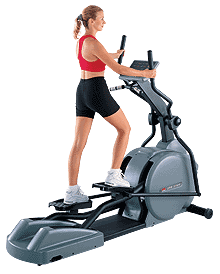This is an area a lot of people get mixed up on. The first thought that comes to mind is the more cardio the better. Wrong, you should aim for the least amount of work for the most results and cardio doesn't provide these results. Too much cardio can make you fat because your body produces too much cortisol which causes you to lose muscle. You are probably wondering how much cardio is too much cardio. For beginners I recommend 3 times a week for 20 minutes the first two weeks. This should be low intesity so your body has time to adapt to this new activity. Then you can bump it up to 3 times a week for 30 minutes. After about a month you can move it to 4 times a week for 30 minutes. If you are weight training on the same day you should weight train first then do your cardio. If you have the time you can split your cardio and weight training up. Turn your cardio in to a morning ritual for 30-40 minutes. Then come back in the afternoon or evening and weight train. If you are going to do that remember to take at least 2 days off.
Make sure you are in the right target heart range. If your heart rate during cardio is too high you have the potential of losing muscle. If your heart rate is too low, you are not working out hard enough too see the results you are looking for. Anaerobic means you are without oxygen. Aerobic means you are with oxygen. You want to stay aerobic during cardiovascular exercise. This will help prevent you from losing muscle.

If you have ever worked out in a gym you probably have seen charts on the wall recommending a target heart rate by age. The drawback to those charts is someone your same age probably has a different resting pulse. Click Here and fill out the target heart rate form, and write down that number. That number is your body's estimated target heart rate.
I recommend that you purchase a heart rate monitor, but if you decide not to, this is how you can take your heart rate during exercise. Place two fingers on your wrist and count how many times your heart beats for ten seconds. Then multiply that number by six. Your resting pulse can easily change over time, so make sure to come back here and use our website tool to re-calculate every 3-6 months.
Your body will adapt to exercise over time. You always want to make sure you are switching up the type of cardio you are doing. For example, for six weeks you ride the bike and then switch to the elliptical trainer. There are a lot of different types of cardio exercise. If you are in the gym, you can ride the bike, walk or jog on the treadmill, elliptical trainer or take some classes. The only draw back to classes is your heart will not stay consistent, but it is good to UN-adapt your body and switch things up.
If you are not working out in a gym, you can bike ride outside, run or walk outside, or visit a track and walk up and down the bleachers. You can go for a hike. Make sure to wear a watch to time your workouts.